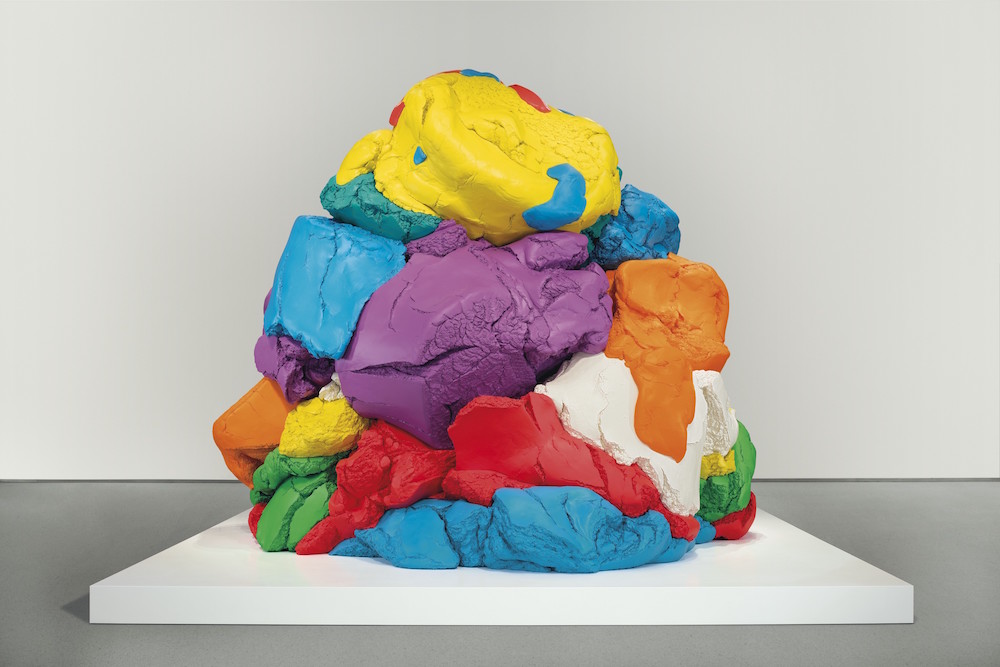Jeff Koons
An excursion into the art world
Round shapes, colors, nostalgia, beauty in skilled performances—all those terms are indicators for joyful design—and when looking at Jeff Koons art we cannot deny that all those elements synergize in his works of art—making Jeff Koons a perfect example of how to consciously use all those “ingredients” to create joyful experiences.
Jeff Koons finds beauty in the ordinary and overlooked things of our life and is considered the most bankable contemporary artist alive—his stainless steel Rabbit (1986), sold for $91.1 million in 2019, is the most expensive artwork by a living artist to ever be sold at auction. The concept of the readymade—displaying an ordinary object in a new context as a work of art, is the foundation for most of Jeff ’s work. He says the idea that he “could acquire things and let them just display themselves” was a revelation. Knickknacks, comic books, ceramic figurines, and domestic appliances act as a springboard for his imagination. His works are clearly inspired by pop culture, consumer desire, sexual freedom, childhood wonder and self-acceptance. While other artists only stay relevant for a short time, nobody else has stayed so relevant for so long.
His pieces provoke smiles, gasps, cringes, laughs, and, above all else, the individual’s investigation of those reactions. He doesn’t shy away from candy-colored excess. His signature motif, the high-polish surface, reflects our experience of his art back onto us.
“It’s really the quality of his work, interlocking with economic and social trends, that makes him the signal artist of today’s world.”—New Yorker art critic Peter Schjeldahl.

Nostalgia, Colors, Round Shapes
Inflatable Flower and Bunny was the first piece of art that brought toys and mirrors into Jeff’s artistic vocabulary. He picked the bunny because it reminded Jeff of the Easter decorations in his hometown. Several motifs, namely the cartoon iconography and use of reflective surfaces, are still central to Jeff’s work today.

Skilled Performance, Round Shapes, Nostalgia
“I wanted to keep it a very womb-like situation with water,” Jeff Koons commented in a 1992 Taschen monograph. But this vision proved to be incredibly challenging. To bring his idea to life, Jeff consulted Richard P. Feynman, a Nobel Prize–winning physicist, to devise a method of filling the balls and tank with the correct proportions of distilled water and highly refined salt so the balls would float. Temperature fluctuations and visitors’ footsteps blend the water and sodium, causing the balls to sink; the artwork has built into it an inevitable failure, requiring reinstallation every six months.
“Ideas come from sensations. You don’t have ideas without having sensations.”—Jeff Koons

Colors, Nostalgia, Skilled Performance
Play-Doh took Jeff Koons 20 years from conception to completion. The piece of art is his memorial to innocent creativity—made up of 27 individual pieces of polychromed aluminum, it re-creates at monumental scale a colorful mound of modeling putty once given to Jeff by his son Ludwig. Play-Doh represents an inflection point of Jeff’s preoccupation with superrealistic, large-scale sculpture.

Skilled Performance, Round Shapes, Shininess
Balloon Dog started as a simple idea for Jeff: create something that would imbue adults with the delight that children feel at birthday parties. The execution proved more complex. In a feat of modern fabrication, Jeff translated this concept into an 11-foot-tall stainless steel sculpture whose dimensions precisely replicate its reallife latex counterpart.
Like many of Jeff’s high-polished works, these pieces engage the spectator and celebrate the surroundings of their installation with the intent of bringing joy to audiences the world over.
Source
Jeff Koons on Masterclass. URL: https://www.masterclass.com